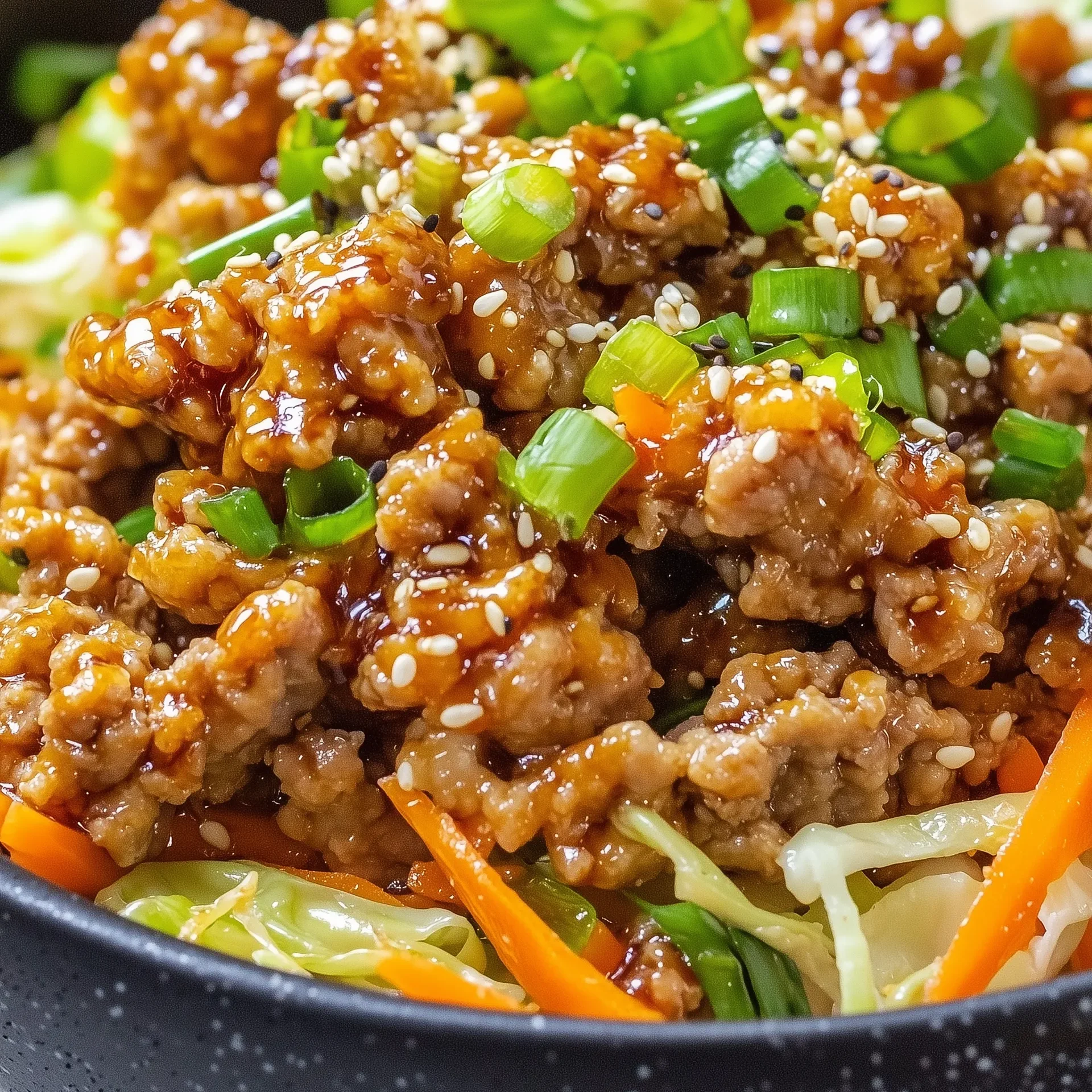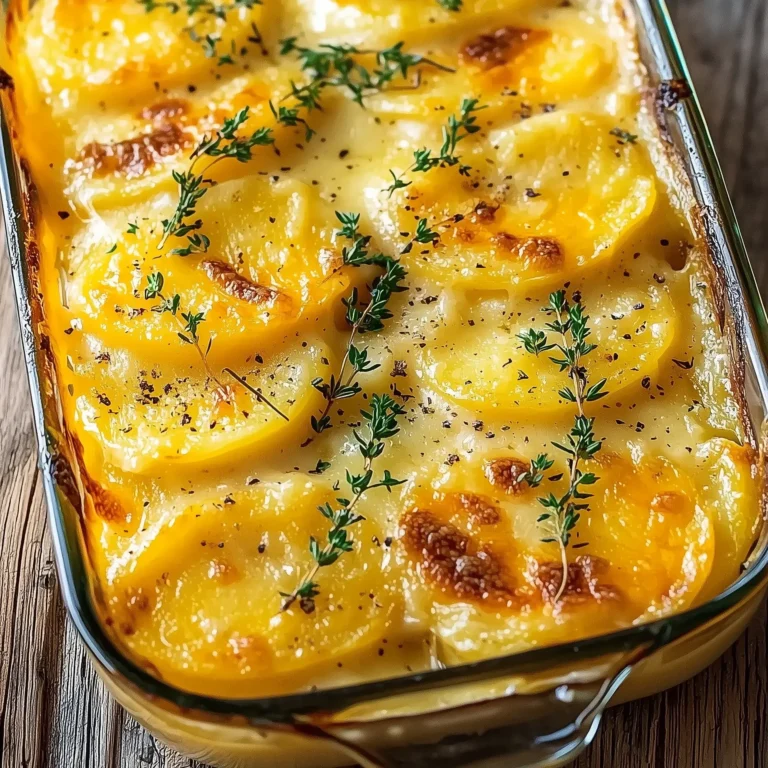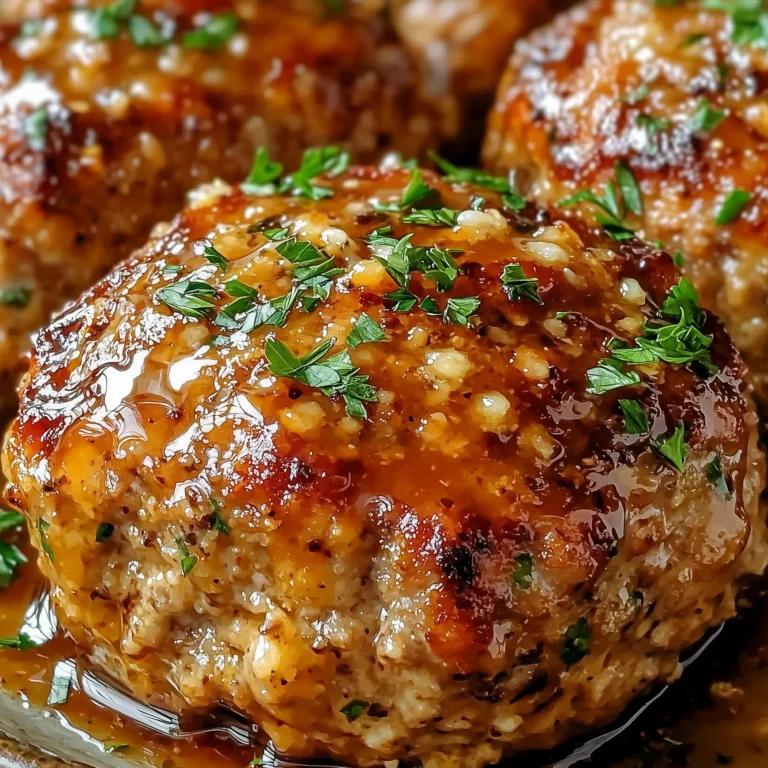Follow Me On Social Media!

If you love the bold flavors of egg rolls but are looking for a healthier, hassle-free alternative, look no further. Egg Roll in a Bowl is a low-carb, high-flavor meal that captures everything you love about this takeout favorite—with none of the grease or wrappers. Whether you’re a busy professional striving to eat healthier or a low-carb dieter looking for a new recipe to shake up your routine, this one-pan wonder is just what you need.
We’re breaking down everything you need to know about this game-changing dish, including its health benefits, nutritional highlights, and customizable options, along with a step-by-step recipe that’s so easy, you’ll wonder why you didn’t make it sooner.
Why Egg Roll in a Bowl is a Healthier Alternative
Egg rolls are undoubtedly delicious, but traditional versions come deep-fried in wrappers, packed with high-calorie carbs, and often loaded with unnecessary fats. Egg Roll in a Bowl tosses out the wrapper and frying oil, offering you a guilt-free way to enjoy those savory, umami flavors in a lighter way. Each bite is packed with protein, fiber, and an array of vitamins and minerals, all while remaining incredibly satisfying.
What’s more, this dish is:
- Low-carb and keto-friendly
Perfect for cutting back on carbs without giving up flavor.
- Quick and convenient
Made in just one pan, making it ideal for busy weeknights.
- Customizable
Easily adapt the recipe according to your taste preferences or dietary needs.
With about 350 calories per serving, it’s a perfectly balanced meal that doesn’t skimp on flavor or nutrition.
Key Ingredients and Their Nutritional Perks
This bowl isn’t just about great taste; it’s a nutrient-packed powerhouse. Here’s a closer look at some of its standout ingredients:
- Ground pork (or turkey): Packed with protein and essential fats that help keep you full longer. Opt for turkey if you’re looking for a leaner option.
- Cabbage: A low-calorie, high-fiber vegetable that is loaded with vitamins C and K to support immunity and bone health.
- Carrots: Rich in beta-carotene and antioxidants, these crunchy veggies promote good vision, skin health, and overall vitality.
- Soy sauce and hoisin: These bring the iconic sweet-savory flavor while boosting umami without extra fats.
- Garlic and ginger: These powerhouses not only give the dish a flavor kick but also offer anti-inflammatory and immune-boosting benefits.
- Rice vinegar: Adds a tangy depth and aids digestion while being low in calories.
- Sesame seeds and green onions: These garnish essentials provide a boost of texture and a pop of fresh, earthy flavor.
When combined, these ingredients create a balanced meal that feels indulgent while nourishing your body.
How to Customize Your Egg Roll in a Bowl 🍳
One of the best things about Egg Roll in a Bowl is just how versatile it is. Here are a few ideas to make it your own:
- Go vegetarian: Swap out the pork for crumbled tofu or tempeh and skip the hoisin sauce for a veggie-friendly alternative.
- Spice it up: Add a drizzle of sriracha, chili oil, or a pinch of red pepper flakes for a spicy kick.
- Switch up the protein: Use ground chicken, shrimp, or even a mix of mushrooms for a fresh twist.
- Load up on greens: Stir in baby spinach or kale during the last few minutes of cooking for a boost of nutrients.
Meal Prep and Storage Tips
Egg Roll in a Bowl is not only quick to make but also perfect for meal prepping. Here’s how you can plan ahead and store it:
- Refrigeration: Store leftovers in an airtight container for up to 4 days. Reheat in the microwave or on the stovetop for a fast, flavorful meal.
- Freezing: Make a big batch and freeze individual portions for up to 2 months. Allow to thaw in the fridge overnight before reheating.
- Prep Ahead: Chop your vegetables and gather your sauces in advance to save even more time when it’s time to cook.
It’s the ultimate meal to count on when life gets busy and you need something quick and nourishing to fuel your day.
Serving Suggestions:
-
- Serve over steamed rice for a hearty and satisfying meal.
- Pair with a fresh side salad or sautéed greens to add a crisp, refreshing element.
- Add a warm, crusty bread or dinner rolls to soak up any extra sauce.
- Complement with a simple soup, such as miso or chicken broth, for added comfort.
- Top with fresh herbs or a squeeze of lemon juice to enhance the flavors just before serving.
Variations to Try:
-
- Add a hint of spice by incorporating chili flakes, cayenne pepper, or your favorite hot sauce.
- Include protein like grilled chicken, shrimp, or tofu to make it a more filling dish.
- Experiment with different vegetables such as zucchini, bell peppers, or mushrooms for added texture and flavor.
- Try using quinoa, couscous, or cauliflower rice as an alternative base instead of steamed rice.
- Swap out the herbs and spices to match different cuisines, such as using cumin and coriander for a Middle Eastern twist or basil and oregano for an Italian influence.
List of Storage and Reheating Tips:
- Store leftovers in an airtight container in the refrigerator for up to 3-4 days to maintain freshness.
- Allow the dish to cool completely before sealing it in the container to prevent excess moisture buildup.
- Reheat the dish in a skillet over medium heat for better flavor retention, adding a splash of water or broth if needed to prevent drying out.
- For a quicker option, reheat in the microwave in short intervals, stirring occasionally to distribute heat evenly.
- Avoid overcooking during reheating to preserve the texture of the vegetables and protein.
List of Mistake to avoid
- Storing the dish while it’s still hot, which can cause condensation and lead to sogginess or spoilage.
- Using a poorly sealed container, as this can expose the food to air and alter its flavor or texture.
- Reheating on high heat without monitoring, which can cause the dish to overcook or burn.
- Forgetting to taste and adjust seasoning after reheating, as flavors can sometimes mellow during storage.
Tips for Maintaining Quality During Storage and Reheating
- Cool Before Storing: Always allow the dish to cool to room temperature before transferring it to a container. This prevents excess moisture buildup and helps retain the dish’s freshness.
- Use the Right Containers: Opt for airtight, leak-proof containers made from glass or BPA-free plastic. These maintain the integrity of the food and prevent contamination.
- Portion Strategically: Divide the dish into individual portions before storing. This makes reheating easier and minimizes the need to reheat the entire batch multiple times.
- Label and Date: Clearly label your containers with the dish name and storage date. This helps you track freshness and prevents keeping food for longer than recommended.
- Reheat Gently: When warming up the dish, use low to medium heat to evenly distribute warmth and avoid drying out or overcooking ingredients.
By following these tips, you can preserve the flavor, texture, and aroma of meals, ensuring they taste just as delicious as when they were first prepared.

Egg Roll in a Bowl
Ingredients
Equipment
Method
- Step 1: Heat sesame oil in a large skillet over medium heat. Add ground pork and cook until browned, breaking it apart. Drain any excess fat.
- Step 2: Add garlic, ginger, cabbage, and carrots. Sauté for 4–5 minutes until the vegetables are tender-crisp.
- Step 3: Stir in soy sauce, hoisin sauce, and rice vinegar. Toss everything together until well coated and heated through.
- Step 4: Spoon the mixture into bowls.
- Step 5: Top with sesame seeds and chopped green onions. Serve hot.
Nutrition
Notes
Tried this recipe?
Let us know how it was!
FAQ
Q: How long can I store prepared meals in the refrigerator?
A: Most prepared meals can be safely stored in the refrigerator for 3-4 days. Be sure to label and date your containers to keep track of storage time.
Q: Can I freeze any type of food?
A: While most foods freeze well, some items like leafy greens, cream-based sauces, or fried foods may not retain their original texture or flavor after thawing. It’s best to research specific foods before freezing.
Q: What’s the best way to reheat frozen meals?
A: It’s recommended to thaw frozen meals in the refrigerator overnight and then reheat them on low to medium heat in a microwave, stove, or oven to maintain quality and taste.
Q: How do I prevent freezer burn?
A: Freezer burn can be avoided by using airtight containers or freezer-safe bags, removing as much air as possible before sealing, and keeping your freezer at the appropriate temperature (0°F or below).
Q: Are glass containers better than plastic for meal storage?
A: Both have their advantages. Glass is more durable, reusable, and does not absorb odors or stains, while plastic containers are lightweight and often more affordable. Choose based on your needs and preferences.
Your Next Perfect Meal Starts Here
Egg Roll in a Bowl is more than just a recipe; it’s a lifestyle upgrade for anyone who loves easy, healthy, and delicious meals. With its balanced nutrition, versatility, and big bold flavors, it’s the perfect addition to your weekly dinner rotation.









